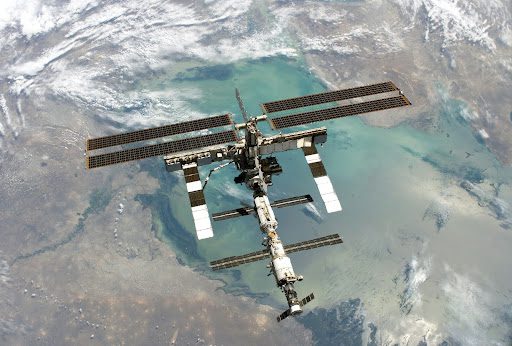Everyone heard about the ISS, but are there any other stations? Below, you can discover not only how many space stations are there, but also find out space station location and space station orbit height. So far, we have had a total of 15 space stations. Five of them are orbiting the Earth, three are orbiting the Moon, and one is orbiting Mars. Six others are still in plan or construction.
Salyut 1 was one of the first space stations launched in 1971 by the USSR. Since then, many designs for other stations have been invented, and their engineering success has varied. The space station that lived the longest is today’s ISS (International Space Station), which has been orbiting Earth since 1998.
How Many Space Stations Are Around the Earth?
The first spacecraft ever launched was Sputnik 1 satellite deployed by the USSR back in 1957. It was the first Earth-orbiting satellite made by humans, but technology has gone a long way since then.
Today, besides the ISS everyone has heard of, there is another station, Tiangong-2, launched by China in 2016 on September 15. Tiangong-2 is being used for research and was tested for future space exploration missions by China. Its mass is 19,000 kg. There are two taikonauts, Chinese for astronaut, manning it for now. The ISS was launched by NASA, being the largest spaceflight human project in history.
What Space Station is Orbiting the Earth?
Both ISS and Tiangong-2 are orbiting our planet today. Ever since October 2000, ISS has always been occupied with crews from Expedition 1. Tiangong-2 was occupied by the Shenzhou 14 crews back in June 2022.
These two major platforms are the only ones orbiting the Earth now, since developing and building such tech is not at all easy. It’s necessary to gather many teams of engineers from the entire world, and the cost is often extravagant.
Why Does the Space Station Orbit Earth?
In the beginning, ISS was a laboratory, factory, and observatory that provided transportation, maintenance, and a staging base for low-Earth orbit missions not only to Mars and Moon but also to asteroids.
ISS was launched back in November 1998. There was a Russian rocket launching a control module called Russian Zarya. In just two weeks, the Endeavour met Zarya space shuttle was launched in orbit, carrying the US unity node. Still, this tech is primarily built with research and exploration in mind.

How Long Can the Space Station Stay in Orbit?
Space station orbit time is 90-93 minutes, traveling from west to east, at a 51.6 degrees inclination, depending on ISS’s exact altitude. And for that time, a part of our planet is in darkness, whereas another one is in light.
ISS is the largest object that orbits our planet, and it has been this way since 1998. Cosmonauts and astronauts worldwide have visited it because they had to perform microgravity research and other various experiments, covered in space magazines like SpaceNews, Orbital Today, Space.com and many others around the world.
Is There Any Other Equipment on Space Station?
Aside from the laboratories where astronauts are conducting scientific research, a space station includes many other parts. There are Russian models with basic systems helping this whole technology to work. There are also living areas for the crew members, as well as module nodes connecting parts with each other.
Several solar arrays stretch out on the sides. These arrays collect the Sun’s energy to ensure electrical power supply. These arrays are connected with trusses that keep radiators controlling the technology’s temperature.
How Fast Can a Space Station Move?
The International Space Station’s orbiting speed is approximately 17, 150 miles per hour. This means around 5 miles per second. ISS orbiting Earth reaches the sunrise every 92 minutes, which means you can see its speed and location when the link transmits video feeds in real-time from cameras attached outside ISS.
You can get notices from NASA’s Spot The Station service when the ISS is clearly visible at any given location for 2 minutes. NASA’s Spot The Station notices are informing people about ISS’s direction at night. If you aren’t sure about your directions, just watch where the Sun is setting, which is always westward. From this direction, it’s easy to locate where ISS will appear.
Space technology keeps advancing, and soon enough, we should be able to see more space station projects from private companies that are highly active in today’s market. Some of them might even be available for civilian space travel, which is also gaining momentum these days.



































